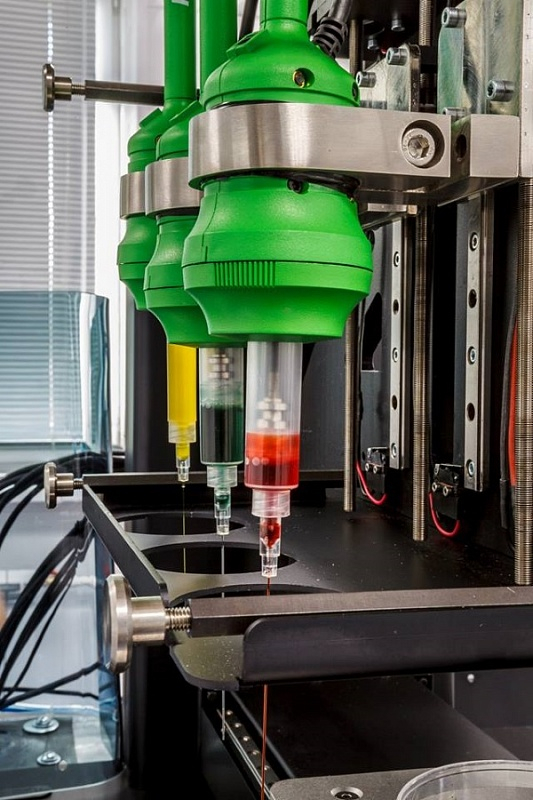Russian scientists to unveil 3D bioprinted transplantable organ in March 2015

As many of you will know, the 3D printing revolution is quickly expanding into new technological avenues that many people would not quickly associate with additive manufacturing. Perhaps the biggest challenge among them is 3D bioprinting, or the creation of cell tissue. Tests have shown bioprinting to be potentially capable of producing blood vessels, vascular networks, and other transplantable tissues, while some scientists are even dreaming of 3D printed hamburgers.
When that technology becomes both available and commercially interesting, it could understandably have far-reaching economic and biological consequences for the food industry and the medical sector.
And that might not even be so far away. Numerous teams of scientists are already working on bioprinting solutions, but one of the most promising and certainly the most ambitious amongst them is the Russian company 3D Bioprinting Solutions. Based at the Skolkovo Innovation Center just outside Moscow under the leadership of Professor Vladimir Mironov, they have been working on a Bio 3D printer for some time now.
We already reported on 3D Bioprinting Solutions' promising progress two months ago, when we learned that they were applying for a patent for their still unnamed 3D bioprinter. But now they are adding more fuel to the bioprinting fire themselves, announcing to Russian reporters that they will reveal the world's first 3D printed, actually transplantable organ (a thyroid gland) on 15 March 2015.

This gland will be intended for mice, rather than humans. Professor Mironov, who heads the project, explained that they chose a thyroid gland for its relative simplicity, and the professor hopes that this organ will prove that bioprinted organs are compatible. with living organisms: 'We'll start with mice. We'll shut off the [lab mouse's] thyroid with radioactive iodine, which will cause the level of hormones in the organism to drop. We'll then transplant the printed structure, and if the level of hormones gets back to normal, we will be celebrating with champagne.'
As material, the Russian 3D bioprinter will use stem cells, which they are already capable of producing as bio-ink in a standardized laboratory procedure. The cells themselves will be extracted from a mouse's fat tissue. And as they're made from the mouse's own cells, they will not be rejected after transplantation.
To be able to use them for printing, the stem cells are transformed into 'spheroids', or aggregates of layered cells that have been placed in hydrogel. The organ will then be printed into a special type of bio reactor, where the gel will dissolve and allow for the organ to mature.
Stem cells are extracted from fat tissue and can serve as building material for any body tissues. For the three-dimensional bioprinting the cells are transformed into so-called spheroids - an aggregation of cells, which are layered - according to a pre-set digital organ design - onto hydrogel. The gel then dissolves, and the printed organ is placed into a special bio reactor, where it matures.

Of course the real question on everyone's mind is: when will this technology become available for humans? To this, professor Mironov would answer that they are planning to develop 3D printable and fully functional human kidneys in 2018. The focus is on kidneys, as kidney failure kills thousands every year. The professor added that 'the one who will be the first to print and then successfully transplant the kidney to the patient - who will stay alive - will for sure get a Nobel prize.'
And if this wasn't exciting enough, 3D Bioprinting Solutions also announced plans to take 3D bioprinting into space. While currently relying on gravity to be printed in a structure of successive layers, the scientists are also exploring the possibility of creating a special magnetic field that would enable weightless printing. Supposedly, testing for this will take place aboard the International Space Station in the near future. Now it's just a matter of staring at the calendar until March.







